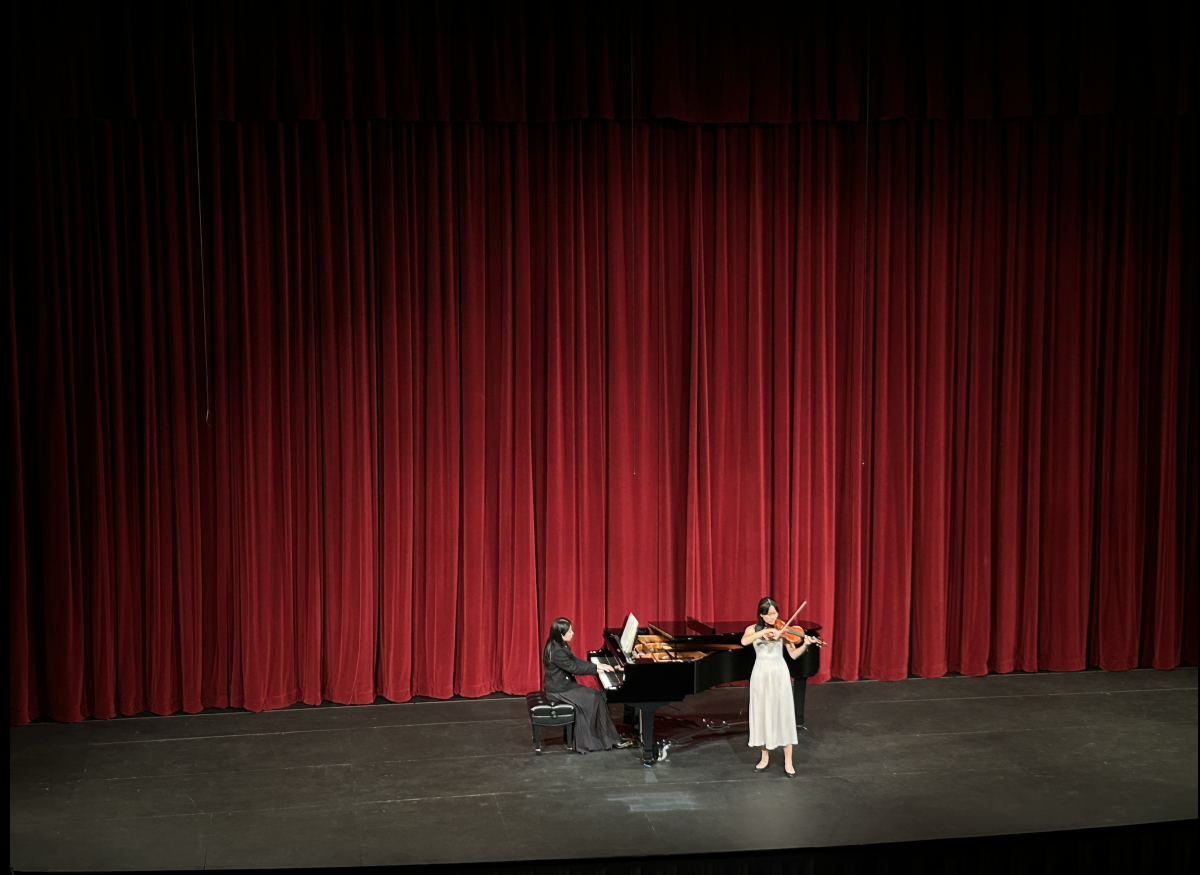The Harvard-Westlake (HW) fall musical, “Violet”, was a success that impressed and dazzled the audience. The well-acted play wasn’t necessarily set in a relatable setting to the student body, but still encompassed ideas that spoke to people all across the age spectrum and was an overall good experience.
The basic plot of the musical was a woman named Violet has a terrible scar on her face that her father gave her when she was a child. The majority of the play is her on her way to find a priest, who she believes will be able to heal her face and make her ‘beautiful.’ The play is chock-filled with epic musical numbers, flashbacks between Violet as an adult and child and intriguing developments between the main characters.
Emily Malkan played the star of the play, Violet. Emily managed to play a character in her 20’s and make it believable, even though she’s just a teenager. She also succeeded in making the audience believe in and visualize the nonexistent scar on her face, as there was no makeup used to create the scar on her face.
She commanded the stage with her presence as well, with her being the core character in the plot. She was charismatic and the audience fell in love with the character but also the pureness that Emily brought to the stage. The songs in the musical beautifully displayed her voice as well, awing the audience.
Other central characters in the musical were Leo Saperstein ’23 and Samuel Hines ’24, who became Violet’s friends during her travels. They were both of great performing and singing talent, and their songs with Emily were all performed with grace and fluidity.
The costumes in this musical were one of my favorite parts of the production. They were all intricate but not unrealistic. Violet’s dress was simple but had an old fashioned vibe that fits with the setting and the time period, but didn’t draw our attention from her face too much. Saperstein and Hines both wore full military uniforms, as they were both enrolled in the army.
A screen in the back-projected images that set the displayed the scene. These projections honestly made it easier to understand the plot. Because the plot revolved from a train station, a train, to a church in a new city, it was helpful to have a clear image of where the characters were. In addition, because the scar on Violet’s face wasn’t clearly depicted, it was nice to be able to not have to infer the time and space of each scene.
The only part of the production that felt slightly off was the actual choice for the story. An adult potentially having a personal crisis about the state of her face wasn’t exactly something that drew in teenagers in. It seemed as if the aim of the story was to comment on humans’ obsession with being ‘beautiful’ and to express the importance of love and friendship over that, which is an important message; especially for teenagers in this age of social media. It’s simply that one had to look beneath the literal aspects of this production, to spot the areas that we could relate to.
Overall just because the musical wasn’t relatable or easily accessible for teenagers, that does not mean it wasn’t a good choice, as it forced the audience to have compassion for the main character, an import aspect in theater and life. We all have days where we don’t feel as if we look the way we want to, but as Violet learned to, we should learn to love ourselves.











